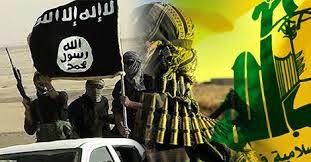Surprises in store for al-Nusra Front militants in Syria?
Dr. Theodore Karasik /Al Arabiya
Sunday, 5 October 2014
With the ongoing airstrikes targeting Syrian terrorist targets, there is concern that only airstrikes will not be enough. U.S. military officials are repeating that any U.S. military ground operation is off the table. But there is a need for more military power to “degrade and destroy” Sunni extremists on the ground in Syria. This fact is plainly obvious. What are the ground requirements to go up against ISIS and al-Nusra? What is this ground force going to look like? How long will a ground operation go on for?
The ground operation in Syria, done in conjunction with coalition airstrikes, may consist of Special Operation Forces (SOF) and made up of Arabs, specifically Jordanians. This religio-cultural aspect to SOF operations would be an important strategic and tactical decision. Jordanian SOF is tied closely with the topographical surroundings found in Syria, and is acclimatized to the conditions found in the Levant.
When it comes to the upcoming ground operations, the Rules of Engagement (ROE) will be based on cultural attributes. This approach will also feature sharp and effective swarming attacks. Swarming attacks are essentially a convergent attack on an adversary from multiple axes combined with astute information and deception operations. ISIS and al-Nusra practice this type of warfare already.
Arab strategists are estimating that there only needs to be between 10,000-12,000 SOF to hunt down Sunni extremists. Jordan may well be “the tip of the spear” for the upcoming ground campaign, according to one official. Amman’s SOF is world renowned with almost 30,000 SOF warriors augmented with enhanced training at the King Abdullah Special Operations Training Center (KASOTC). KASOTC is ideal for pre-deployment training, joint and combined military exercises, or enhancing proficiency of unit requirements. In operations against Sunni extremists in Syria, Jordanian SOF, the backbone of the Jordanian military, will be deployed in hunter-killer teams to attack the extremist enemy.
Boots on the ground – a gory glory
This two to three year SOF ground campaign may be led in two phases. The first phase could consist of the Jordanian SOF deployments with back up from the Jordanian army. The U.S.-led air coalition will provide Close Air Support (CAS) while still targeting Sunni extremist valuable and vulnerable targets in a key application of military theory and doctrine against terrorist groups and insurgents.
“The FSA fighters can defend themselves but cannot conquer and occupy territory whether large or small”
Dr. Theodore Karasik
The second phase could be to insert the more than 5000 Free Syrian Army (FSA) fighters who have been trained and modestly equipped over the past few years. These FSA are to be deployed by helicopter to keep the peace in areas mollified by Jordanian SOF. An additional 5000 FSA are to be trained either in Jordan or Saudi Arabia over the coming eight to twelve months to augment the FSA force. Importantly, the FSA fighters can defend themselves but cannot conquer and occupy territory whether large or small. In other words, the FSA force is intended for constabulary functions that takes them out of the main fight against Sunni extremists since they fared so poorly in the past. Clearly, progress on the ground will determine the shift from the first phase to the second phase.
The above plans also bring to attention the role of the Syrian government, Russia, and Iran during the SOF ground operations against Sunni extremists. Syria’s Russian and Iranian-backed military forces will also want to take part in ground operations. At the Syrian port of Tartus, Russia is already reportedly resupplying the Syrian army and the Syrian Republican Guard for action, with Tehran’s approval, to take on Sunni extremists.
Lessons learned
Last week, Jordanian King Abdullah visited Moscow to meet with Russian President Vladimir Putin. The meeting’s timing and content tells us much about the planning that is ongoing to rid Syria of Sunni extremists. According to analysts in Amman and Moscow, the meeting between the two leaders not only dealt with possible coordination on attacking Sunni extremists but also taking lessons learned from Russia’s previous encounters with Chechen rebels since the 1990s given that both ISIS and al-Nusra use tactics, techniques, and procedures from the Chechens in their ranks.
Overall, the insertion of Jordanian SOF, which could be started in small targeted strikes to protect the Kingdom’s northern border, is a necessary requirement. It brings an Arab solution to a Levantine problem. Jordanian SOF should not be underestimated: Amman’s “tip of the spear” reportedly helped to free the kidnapped Jordanian Ambassador to Libya Fawaz al-Itan in May 2014. Most importantly, this Jordanian SOF effort keeps American and Western boots off the ground in Syria. Such an approach helps to calm fears in Western capitals that they will be sucked into Syria and should be highlighted as soon as possible in the public sphere and social media to calm fears of mission creep and quagmire for the United States. Simultaneously, the above plans would help to set the stage for a political solution to Syria in the coming years and set the phase for negotiations which is what all powers want to see in the future. Unfortunately, first, the actual ground campaign needs to begin in all its gory glory.





















